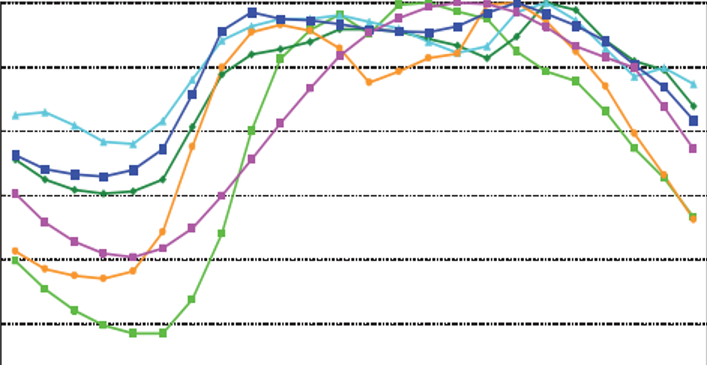ENERGY STORAGE TECHNOLOGIES FOR RENEWABLE ENERGY
Main Article Content
Abstract
Energy storage systems and technologies are getting more attention. Especially in recent years, there has been an increasing campaign to promote the use of renewable or clean energy. Today, the amount of renewable energy consumption continues to increase sequentially. Most renewable energy sources occur naturally. Therefore, there are variations and changes all the time. Knowledge in the field of steadily acquired energy storage has become essential. To achieve a balance of utilization and allow effective management in addition to the use of energy storage technology to improve stability and reduce the problem of energy instability from renewable energy sources. The technology also reduces congestion in power distribution systems during times of high-power demand. It can also reduce the time and cost of construction of transmission lines. Although today the technology of energy storage systems has been developed and advanced much from the original. But some technologies are still in the research and development stage and not worth the investment. In the future, if such technology is developed and widely used, it will provide a more stable overview of the system and lower operating costs. In this academic article,
we will discuss different types of energy storage technologies. Implementation and benefits the growing demand and today's technology.
Article Details

This work is licensed under a Creative Commons Attribution-NonCommercial-NoDerivatives 4.0 International License.
เนื้อหาและข่อมูลในบทความที่ลงตีพิมพ์ในวารสารวิชาการ เทคโนโลยี พลังงาน และสิ่งแวดล้อม บัณฑิตวิทยาลัย วิทยาลัยเทคโนโลยีสยาม ถือเป็นข้อคิดเห็นและความรับผิดชอบของผู้เขียนบทความโดยตรง ซึ่งกองบรรณาธิการวารสารไม่จำเป็นต้องเห็นด้วย หรือว่าร่วมรับผิดชอบใด ๆ
บทความ ข้อมูล เนื้อหา รูปภาพ ฯลฯ ที่ได้รับการตีพิมพ์ในวารสารวิชาการ เทคโนโลยี พลังงาน และสิ่งแวดล้อม บัณฑิตวิทยาลัย วิทยาลัยเทคโนโลยีสยาม ถือเป็นลิขสิทธิ์ของวารสารวิชาการ เทคโนโลยี พลังงาน และสิ่งแวดล้อม บัณฑิตวิทยาลัย วิทยาลัยเทคโนโลยีสยาม หากบุคคล หรือหน่วยงานใดต้องการนำทั้งหมด หรือส่วนหนึ่งส่วนใดไปเผยแพร่ต่อ หรือเพื่อกระทำการใด ๆ จะต้องได้รับอนุญาต เป็นลายลักษณ์อักษรจากวารสารวิชาการ เทคโนโลยี พลังงาน และสิ่งแวดล้อม บัณฑิตวิทยาลัย วิทยาลัยเทคโนโลยีสยาม เท่านั้น
References
Thakrit Panklib et al. Electricity Consumption Forecasting in Thailand, Using Artificial Neural Network and Multiple Linear Regression. Energy Sources Part B: UK, Vol.10, No.04, 427-434. (2015).
T. Fujihara, et al.: Development of pump turbine for seawater pumped-storage power plant, Hitachi Review 47 (5), pp. 199-202, (1998).
N.N.: Bath County Pumped Storage. Civil Engineering, ASCE, 55 (7), pp. 55, (1985).
VDE - ETG Energy Storage Task Force: Energy storage in power supply systems with a high share of renewable energy sources Signifi cance - state of the art - need for action, Report, Dec (2008).
B. Espinar, D. Mayer: The role of energy storage for mini-grid stabilization, Report, IEA-PVPS T11-0X:2011, (2011).
Chen, H., Cong, T.N., Yang, W., Tan, C., Li, Y. and Ding, Y. Progress in electrical energy storage system: A critical review. Progress in Natural Science, 19: 291–312. (2009).
Gache, G., How capacitors work [Online]. Available from: http://news.softpedia.com/newsImage/How-Capacitors-Work-4.jpg/ [2011, October 31]. (2008).
Chen, H., Cong, T.N., Yang, W., Tan, C., Li, Y. and Ding, Y., Progress in electrical energy storage system: A critical review. Progress. (2009).
Beaudin, M., Zareipour, H., Achellenberglabe, A. and Rosehart, W. Energy storage for mitigating the variability of renewable electricity sources: An updated review. Energy for Sustainable Development, 14: 302–314. (2010).
Jossen, A., Garche, J. and Sauer, D, U. Operation conditions of batteries in PV applications. Solar Energy, 76: 759-769. (2004).
Sioshansi, R. and Denholm, P., The value of concentrating solar power and thermal energy storage [Online]. Available from: http://newenergynews.blogspot.com/2010/04/economics-of-solar-power-plant-energy.html [2011, October 31]. (2010).
Dincer, I., On thermal energy storage systems and applications in. Energy and building, 34: 377-388. (2002).
Ibrahim, H., Ilinca, A. and Perron, J. Energy storage systems-Characteristics and comparisons. Renewable and sustainable energy reviews, 12: 1221-1250. (2008).


